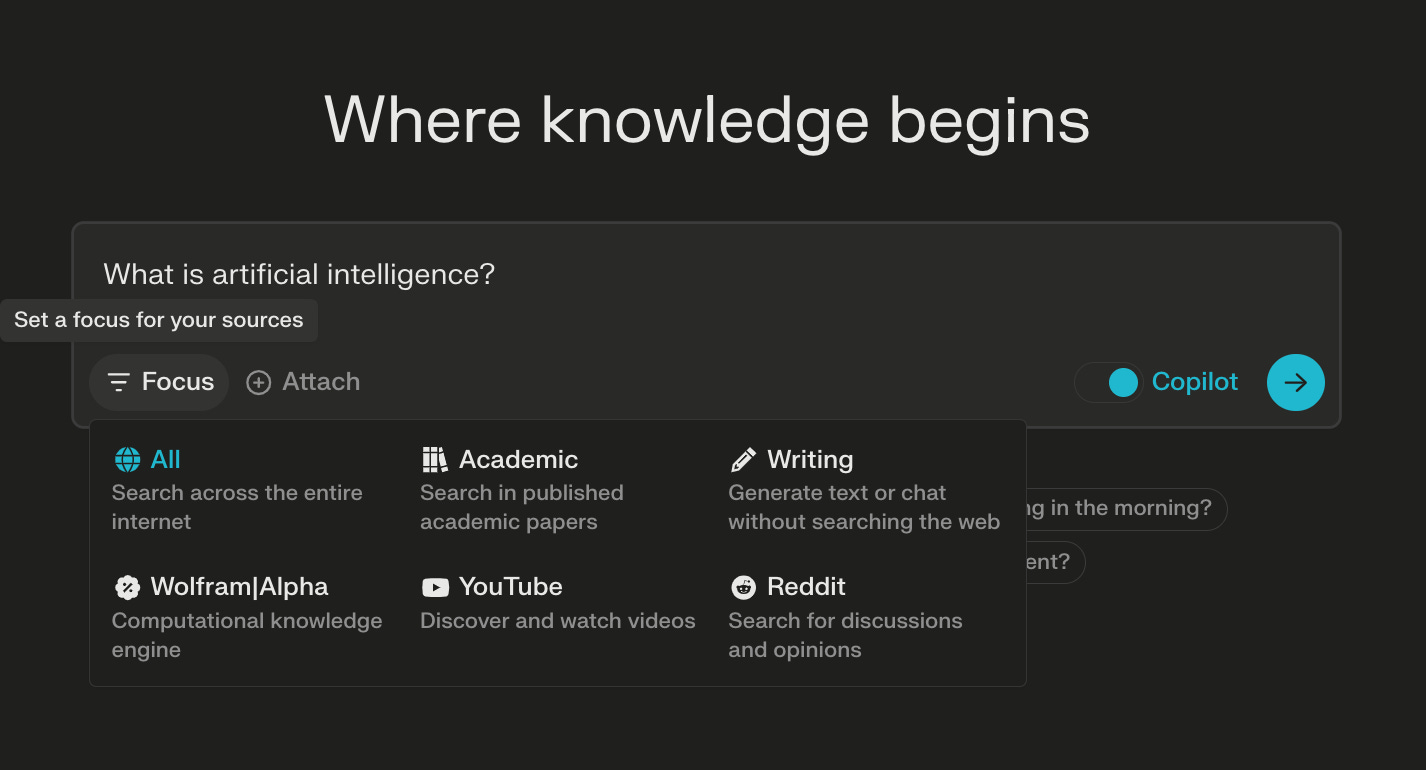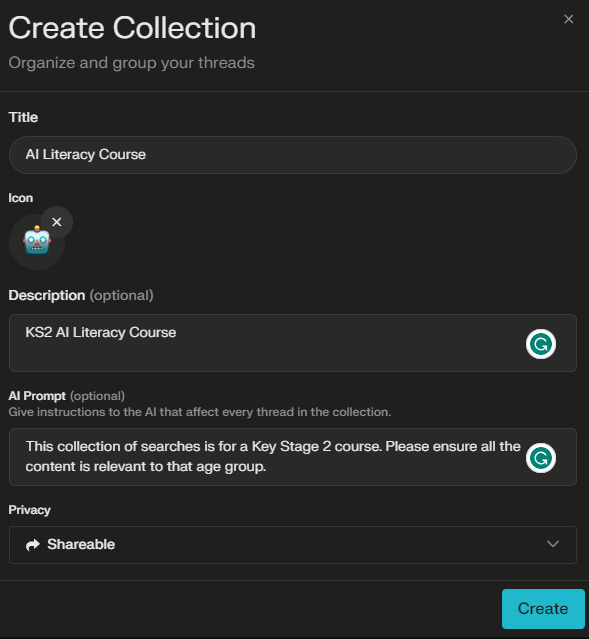Think. Try. Transform. #6
Perplexity - The Google Killer?
Think.
Are we on the cusp of seeing one of the most profound changes to how we search on the internet?
It is the goal of Perplexity to change search and it is even being touted by some as the ‘Google Killer’ (although that is a rather mighty beast to slay). The CEO of Perplexity refers to it as an ‘answer engine’ as ‘users can ask any question directly and receive an actual answer, not just a list of web pages that may or may not contain the answer.’
Such is its popularity that Jeff Bezos and Nvidia have recently invested in the company, and its current valuation is over $500 million.
There are many reasons to begin using Perplexity:
It will avoid the ‘10 blue links’ of other search engines such as Bing and Google.
They will prioritise users over advertisers.
They will leverage the power of LLMs to provide answers in natural language.
It provides sources for each of the searches
Its copilot function can guide you through a search process, asking questions to clarify your thinking
Why should we focus on it from an education perspective?
Questioning: It requires well-written, thoughtful questions to get the most effective responses.
Critical Thinking: Students can scrutinise the sources, removing those that are not of appropriate quality.
Problem-Solving: It can help students solve various problems, providing various suggestions, information and solutions. Also, LLMs are great for creating scenarios that students can engage with and think about.
Synthesising: With the various sources that Perplexity uses, students can further synthesise and refine the information to ensure the accuracy of the response is increased.
Try.
Basic Search:
The Focus button enables you to choose from various options which will guide and determine the focus of your search.
Copilot guides you through the search process and may even ask you follow-up or clarifying questions. Note: this is not always the case, but I still recommend searching with it turned on.
The Attach button is also very useful as you can either ask questions about the attached documents or use the content to help guide and refine Perplexity’s responses. For example, you may want to upload National Curriculum documentation as it will then have some context for whom the information is for (although you could mention this in the prompt too).
Given that Perplexity (free version) uses GPT3.5, its responses are in natural language, but you will also see images and videos on the right hand side.
Sources
Two things you will note from the image above are the sources and the corresponding citations within the responses. Given that the Focus for the search is Academic all the sources contain research articles. You may be happy with this, however, one of the great things about Perplexity is you can remove sources and conduct the search again.
If you scroll down to the bottom of the response, there is a button (View Sources) that opens up a list of the sources.
Once open, you can then remove sources that you do not think are appropriate and it will regenerate the response.
From a teaching perspective, the above feature is great for developing both critical thinking and synthesis skills.
Threads and Collections
Each new search within Perplexity is called a Thread. These can be organised in a Collection, which is something that ChatGPT lacks. It is a really helpful way of organising searches.
Click Collection and fill in the necessary details. You can also assign an AI Prompt (custom instructions) that will guide the AI’s responses for all Threads within that Collection.
The Shareable functionality means that teachers can share their Collection/Threads with a class and the students can continue the search within that Thread.
This is the view when the Collection is opened or shared with other users.
Other Features
Discover
This feature is meant to be a stream of interesting articles. You can open them and begin interacting with the information just like any other thread.
At the moment, I find this feature very limited and it would be great to tailor the recommended articles based on the user’s interests. Most articles are very generic and are more aligned to news in the US. I am sure that more focus will go into this feature over the course of 2024.
Settings
In the settings you can create a unique profile where you provide more detail about yourself. This apparently will make the AI more useful to the user. I had thought that the detail in the profile would affect the type of content you receive in the Discover tab - it does not seem to be the case!
Transform.
Whether or not Perplexity will revolutionise search is yet to be seen. However, I think it is safe to say that they have developed a very interesting product, despite several limitations.
Given that the age limit is 13+, this may be the entry point for many senior school students to begin using generative AI in an educational way. Sure, there are still the risks associated with this technology (bias, misinformation, hallucinations) but the features of Perplexity seem to promote a more academic approach to interacting with a LLM.
So in what ways could Perplexity transform education?
Lesson Planning: Perplexity is brilliant for ideation. Used well, it can add a wealth of resources and ideas that will enhance what is being taught.
Class Discussion: It can be used to facilitate discussions by posing questions to Perplexity and discussing its answers with students, making lessons more interactive. Students can also debate the quality of the responses.
Skill Development: As was mentioned in the Think section, Perplexity can encourage students to think more critically about their research, as opposed to being passive consumers of whatever Google spouts at them.
Personalisation: Perplexity offers search that can be tailored to individual students’ needs (SEND, EAL etc.). The LLM interface means that if appropriate context is provided in a prompt, the search output will be adjusted accordingly.
No Ads: Perplexity is much cleaner than Google and is less distracting due to its minimalist features.
Perplexity is not just another AI tool. It has incredible potential and promises an incredibly exciting direction of travel for internet search. Used well, it absolutely has the power to be transformative in the classroom.












